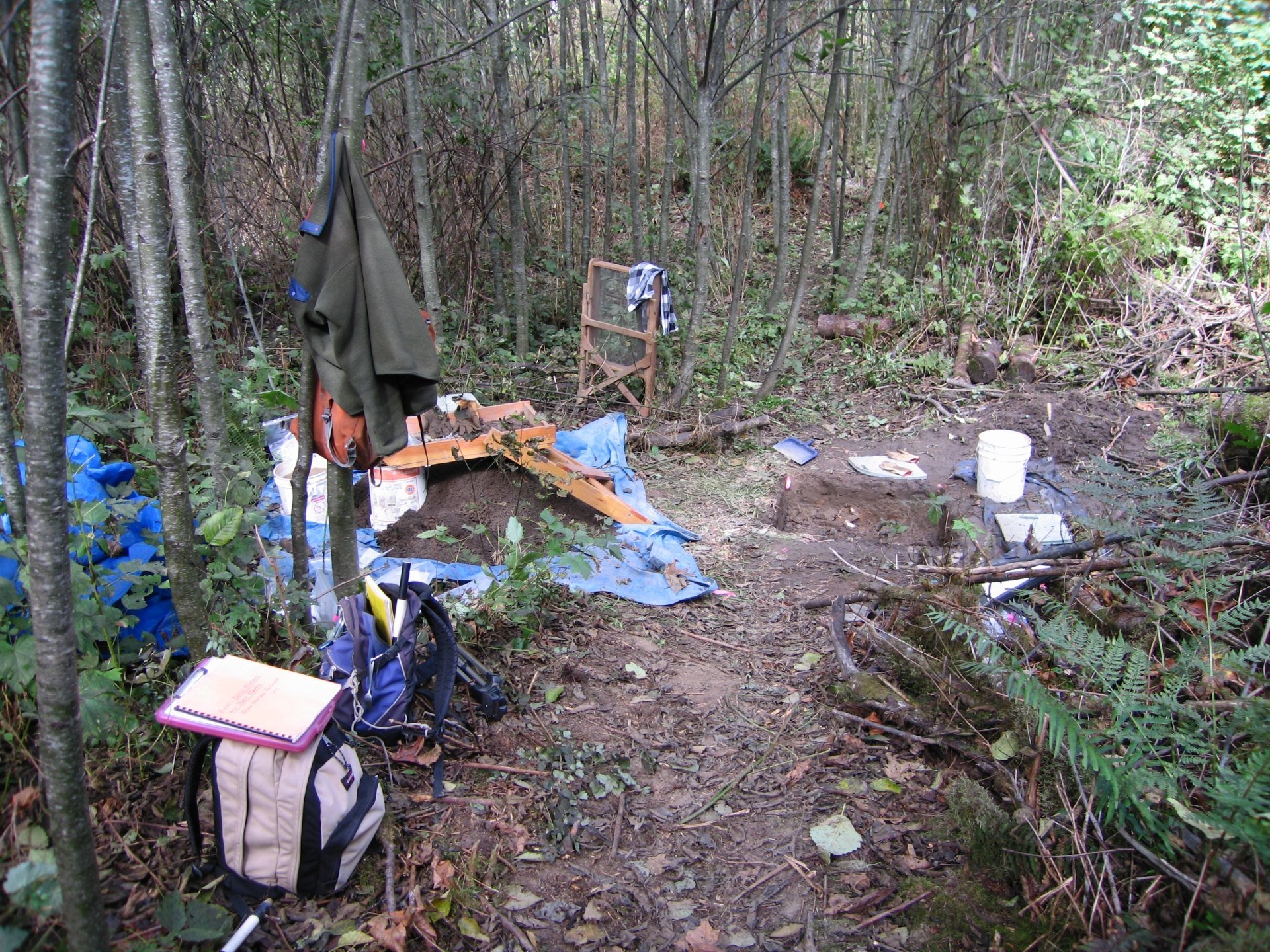The Story Behind Last Stand
The Last Stand series of cardboard tree stumps is the most popular work I’ve made and, for the curious, I offer the story of how and why I came to build them.
In 2005, I was one of several artists-in-residence at an archaeology dig near Darrington, Washington in the North Cascades. We were studying the former site of a homestead and cedar shingle business belonging to the Bedal family: a Sauk-Suiattle woman, her Norwegian immigrant husband and her two daughters.
The Bedal Family on their homestead, cabin and tree stump in the background.
Here I am sifting soil at an excavation site.
Taking a tree core sample.
Thicket of alder trees and a promising excavation site.
Our job was to bushwhack through alder trees and locate enormous 150 year-old cedar tree stumps, measure them and map them. The tree stumps were the only stable points on the landscape (even the river had changed its route) so by locating the tree stumps and comparing with old photos of buildings with the tree stumps, we could find otherwise obscured, potential excavation sites.
This was no easy task. In diameter, the tree stumps were 10 feet, 15 feet and some even larger. Even though the stumps were rotting, they were amazingly intact for their age. Just getting a tape measure around them took several people and many hands.
As our map of cedar stumps on the landscape emerged, I was struck by how groups of trees grew in a straight line. The reason for this, as it was explained to me, is that as seedlings, these ancient trees had germinated on a “nurse log”, which was an even older tree that had lived its full life, died, collapsed, rotted and provided a nourishing substrate for the seedlings, which later grew into enormous trees, now the stumps, before me.
I was awestruck. The hair stood up on the back of my neck as in one brief, unforgettable moment I understood Deep Time, geologic time that makes our human hours, minutes and years feel ridiculously small. Western Red Cedars can live for 1500 years. Seeing evidence of that life cycle helped me understand, as best a human can, the age of our planet and the time scale on which these complex ecosystems operate . It also made me understand the loss when these ecosystems were destroyed by logging.
A fallen log serves as a nursery for a new Western hemlock tree, hence the name nursery log (also called nurse log). Photo: Wing-Chi Poon.
I returned from the archeology dig haunted by tree stumps. I made them in many mediums – cast bronze, plaster and even glass. But, I found all those “beta” versions unsatisfactory. I was seeking to tie the present – our natural resource consumption – to those tree stumps. It is easy to blame people in the past for cutting down the big trees. But, that would be an unfair accusation. Just like the people before us, we use natural resources through the normal course of our lives. In fact, our rate of natural resource use has accelerated greatly.
I happened upon the idea of using reclaimed cardboard, which, in a somewhat twisted way, brings that forest product back to life. From recycle bins, I scavenged boxes that had been used to ship our multitudinous consumer goods.
Each large tree stump took me 9 months to make and, per stump, I cut 8 miles of cardboard and used several gallons of wood glue and about 5 pounds of drywall screws.
My cardboard tree stumps have been in storage for about 10 years but I’ll be bringing them out again for a show at the Jefferson Museum of Art & History in Port Townsend, Washington starting in June. I hope you’ll find time to come see them alongside my more recent, but related, work.




